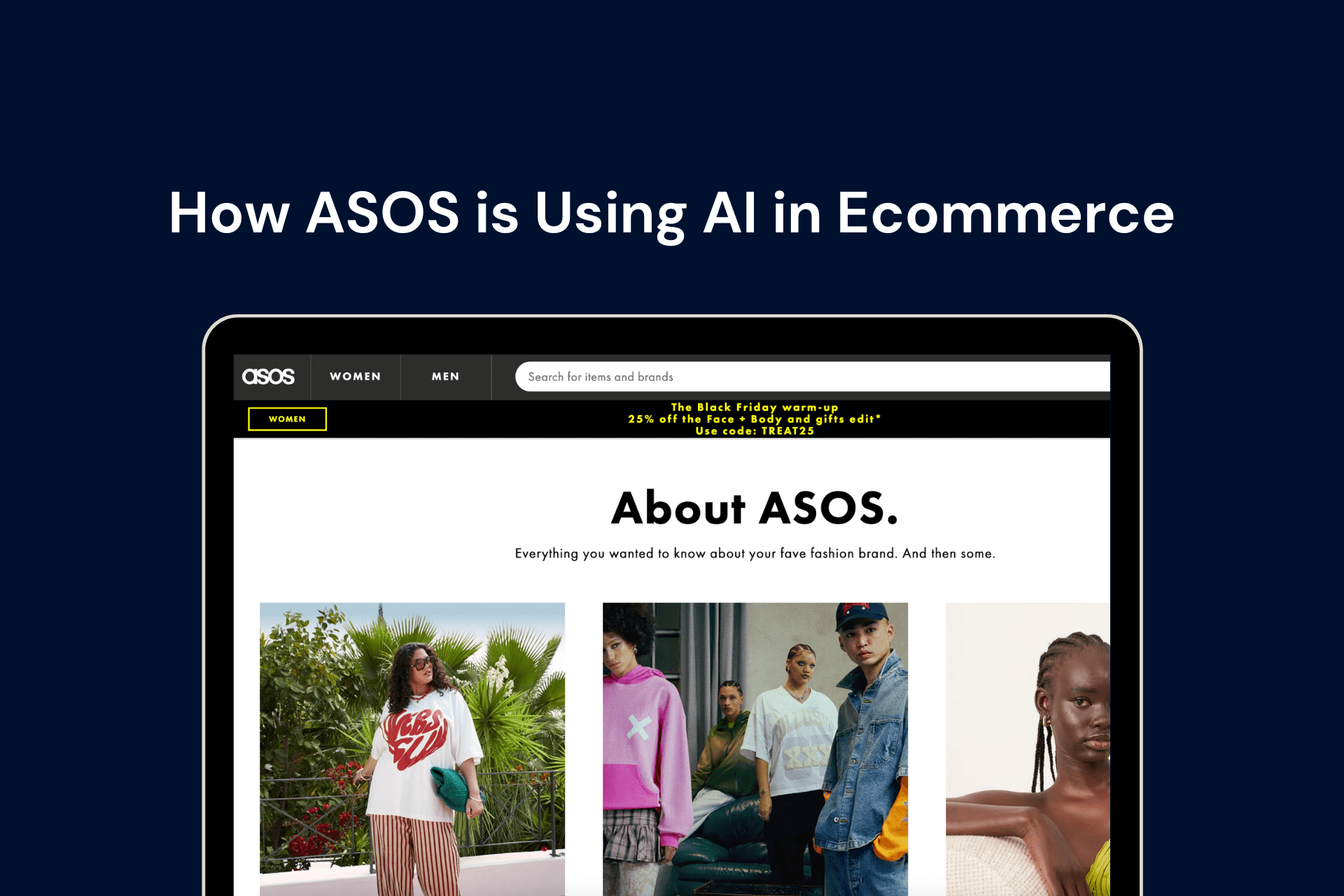This is the only guide you need to learn about social commerce.
Ecommerce is one of the fastest growing industries in the world today. Companies like Amazon, Jingdong, Alibaba, and many others have forever redefined retail shopping and it is expected to grow at break-neck speed over the next few years.
Case in point, in 2021, retail ecommerce sales hit nearly $4.9 trillion worldwide and it is expected to reach a whopping $7.4 trillion by 2025.
Take a moment, let this sink in.
Now one of the most important promotional channels for ecommerce is social media. It can be leveraged to build brand awareness, increase sales, and more importantly, it is an integral channel to communicate with your prospects and customers.
This is also precisely why it is important for ecommerce businesses to have an online store as well as a significant presence on social media. Especially across channels where their target audience is highly likely to be present. It is also equally important for your online store and your social media presence to be in sync in order to work perfectly together.
And this is where the concept of social commerce comes in.
In this blog, we elaborate on the importance of social commerce and everything you need to know about it.
Let’s dive in.
What is social commerce?
In social commerce, the entire shopping experience, from product discovery to purchase takes places on social media.
A good example of this is how a number of businesses use Instagram to display their products on a virtual storefront and also to sell them.

Similarly, you may have often come across shoppable ads on platforms you frequently use such as TikTok, Pinterest, and several others.
The great thing about social commerce is that you have access to a huge audience. For instance, as of 2021, it is estimated that Instagram has nearly 1890 million users annually! Naturally, setting up a social media presence for your ecommerce business gives you access to this huge volume of potential customers which increases the likelihood of product sales.
The difference between social commerce and ecommerce
Now that we’ve understood social commerce, it is key to understand the differences between ecommerce and social commerce.
While it may seem the same or similar, there is a key difference between social commerce and ecommerce.
Social commerce is entirely based on popular social media platforms such as Instagram, Facebook, TikTok, and Pinterest.
Ecommerce is set up either on a website or a third-party e-commerce platform such as Shopify, BigCommerce, WooCommerce, etc.
For instance, H&M, the popular apparel brand offers Instagram Shopping for their customers. Their latest launches are displayed on Instagram and product links are featured in every post. This is a great social commerce example.
On the other hand, KKW, Kim Kardashian’s cosmetic line uses Shopify to sell its products worldwide.
The benefits of social commerce
1. Precise audience targeting
Social media channels offer a great pool of customer data due to their built-in targeting features. You can easily fine-tune your audience preferences and directly advertise your products to relevant viewers to increase the likelihood of purchases. There is an incredible amount of information available on social media which helps you to easily communicate with your ideal audience across the globe.
2. Seamless shopping experiences
Social platforms like Facebook and Instagram have a variety of features to enable frictionless selling and shopping experiences. Features like Shoppable Ads, virtual storefronts, and in-app checkouts makes it super easy for customers to make purchases through their frequently used social platforms.
To top it all off, social commerce allows customers to make purchases as they are browsing without having to open another tab or website on their mobile. Interruptions are removed and the user can shop without having to leave social media.
3. Easier to receive customer feedback
Customers today crave for personalized experiences and instant communication. Fortunately for online stores, social media is a great channel to directly connect with your customers and take feedback. Aspects like comments, like buttons, polls, and chats allow you to converse with your customers and provide an easy channel to measure and capture feedback. You can then use this feedback to shape and customize your offerings.
4. Access to a larger target audience
Like we discussed earlier, social media harbors quite a large number of users. This means you can easily access a global audience. Moreover, your target audience is already scrolling through their social media apps and in most cases, they are ready to make a purchase.
What’s even more interesting is that social media platforms are here to stay and is getting larger by the minute. This means social commerce is going to get bigger in the coming years.
Also, social media is a great place to create a lot of buzz around your products and services and makes for an easier way to grab the attention of your users, increasing your brand reach.
5. User-generated content for better social proof.
It’s no news that social media is THE place where customers can either rave or diss your brand.
And this is exactly what you can take advantage of. Great products and customer experiences call for great reviews on social media. This serves as solid social proof for your prospects. Additionally, engagement on your social media posts such as comments, views, likes etc are all visible to everyone and garners a lot of curiosity and attention from social media users.
You may have come across multiple brands that showcase how their customers are using their products through videos and images.
Social commerce trends and statistics
Since social commerce is an up-and-coming concept, many business owners are still new or just adapting it is a great idea to stay abreast of the latest social commerce trends and stats.
Here are some of the ones that we think you should know:
- Social commerce is expected to grow three times more than ecommerce - if you’re an ecommerce business, this is your sign to gear up and plan your social commerce strategy.
- Conversational commerce is developing with social commerce - social media apps and messaging platforms are integral to social commerce. Leveraging tools like chatbots and virtual assistants is an easy way for brands to engage with customers and deliver personalized, prompt, around the clock customer support. Chatbots can be easily deployed to address basic L1 queries and encourage self-service for customers. This cuts down on operational costs incurred with customer support and frees up human agents to handle much more sophisticated tasks.
- Digital avatars and 3D shopping experiences will be all the rage - virtual 3D shopping experiences are nothing new for brands like Sephora and Ikea. However, integrating it into social commerce can elevate your brand. Digital avatars on social media platforms can help users visualize how their product pick such as clothes, shoes, accessories etc would like virtually. These add-ons are critical to increasing sales and purchase volumes.
- Nearly 70% of shopping enthusiasts turn to Visual Shopfronts on Instagram to discover and purchase new products - clearly, Instagram can open up an avenue of opportunities for your ecommerce business.
- 88% of customers want to see more video marketing from brands - and what better way to increase engagement for your product videos than putting them out on social media?
- Nearly 49% of customers rely on influencer recommendations for purchases - how often have you purchased a product after seeing your favorite influencer recommend it? This is also a reminder for ecommerce businesses to up their influencer marketing strategy.
- Live stream shopping - if you remember the good old days of televised shopping then this is barely new information! Live stream shopping is a concept where customers watch live videos of influencers or brands talking about or demonstrating their products. Viewers are given the option to ask questions and make purchases during the live stream. This promotes higher impulse purchases and increases sales.
Social commerce platforms and their Shopify integrations
Today there are a number of popular social media platforms with amazing built-in features for seamless shopping experiences. These can also serve as social commerce apps. Ecommerce platforms like Shopify have recognized the popularity and the significant potential of social media platforms and social commerce.
To increase profitability and reach, Shopify has even launched integrations with popular social media platforms. These integrations are instrumental in enabling merchants to sell directly through apps such as Facebook and Pinterest.
Not only does this contribute towards a seamless shopping experience but also increases sales from these platforms. Additionally, these integrations allow merchants to design virtual shops on social media platforms that resemble Shopify stores, paving the way for a more holistic shopping experience.
Let’s explore these platforms and their Shopify integrations.
1. TikTok
This social platform in particular has undergone a phenomenal transformation. From a video-sharing platform primarily used to display talents such as dance, mimicry, comedy, and more, TikTok has now become a huge information-sharing and review platform as well.
TikTok x Shopify
The best part is that TikTok has a direct integration with Shopify and is one of the first social media apps to do so. This is a huge step and a modern take on ecommerce and an increasing number of brands will continue to leverage this to sell better.
2. Facebook & Instagram
A cult-favorite, Facebook and Instagram are hands down one of the most used social media platforms today. Merchants can make use of native features to enable in-app purchases and increase order values.
Facebook & Instagram x Shopify
Like TikTok, Shopify has both Facebook and Instagram integrations that allow sellers to easily sync their product catalogs from Shopify to the apps. Similarly, brands can customize their storefronts on Facebook and Instagram and enable features such as one-click checkout.
3. YouTube
The video platform is one of the greatest sources of information for shoppers, especially when it comes to product reviews and experiences. YouTube is gradually introducing shoppable features into the platform and has already rolled it out in US, Brazil, and India.
YouTube x Shopify
Shopify also has an integration with YouTube that allows video creators to feature products within their videos rather than listing them down in the description. In fact, in certain regions like the US, shoppers can discover and purchase items directly onsite without having to leave YouTube.
4. Twitter
While Twitter is not necessarily what comes to mind when you think of shopping, the app has launched Live Shopping where businesses can create live streams and include shoppable banners to encourage quick purchases. Twitter has also launched Twitter Shops where merchants can easily create storefronts in an effort to sell more
Twitter x Shopify
In this integration, merchants on Shopify can easily access the Twitter sales app. This allows them to use Twitter Shops and link products from the app to Shopify for checkout.
5. Pinterest
If visual storytelling is your forte then Pinterest is the perfect place to display your products and encourage your audience to shop. Additionally, the user-generated content also acts as solid social proof to help validate your brand and get customers to trust you.
Pinterest x Shopify
Merchants can upload product catalogs to Pinterest using Shopify’s Pinterest app and also enable in-app checkout for customers. Additionally, much like the verified pages on Facebook and Instagram, Shopify provides a ‘verified merchant program’ to businesses. It allows them to add a shop tab to their profile to encourage buyers to purchase from them.
Conclusion
Social commerce took off in 2020 during the COVID-19 pandemic when the only way to do some window shopping and make purchases was through social media. Since the launch of features like Twitter Shops in 2021 and the increased popularity of social media shopping, nearly two-thirds of customers rely on social commerce.
The proliferation of social media and the heavy traffic on social media platforms is proof that shoppers are increasingly using social media to shop for their favorite products. This means social commerce is a necessity for 2023 and the years to come.
However, we understand that setting up social commerce for your brand can prove to be complicated.
Which is why, XgenTech, a group of ecommerce design and developments that works with global brands can help you with setting up social commerce for your business.
Curious to know more? Discover everything you need to know right here.




